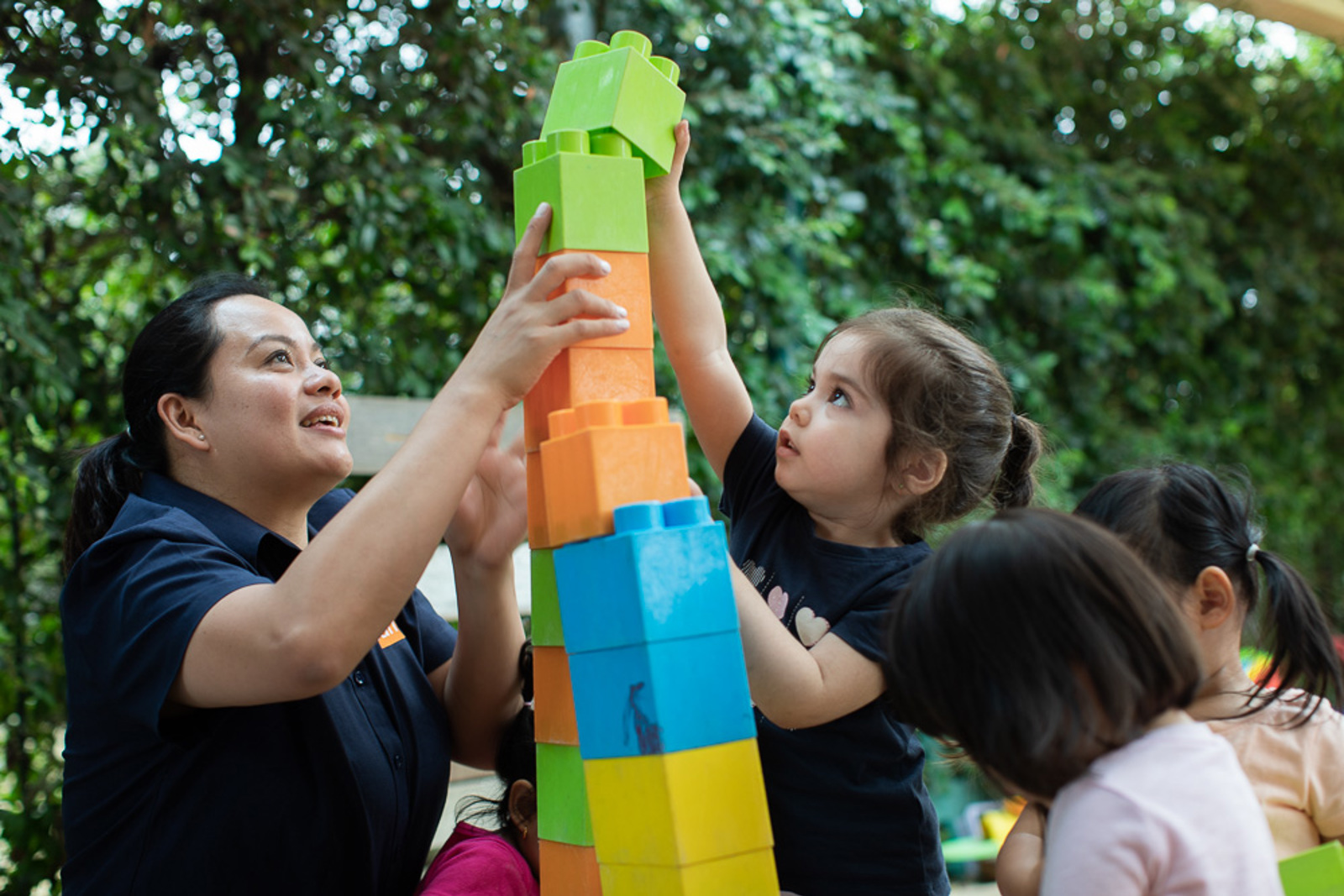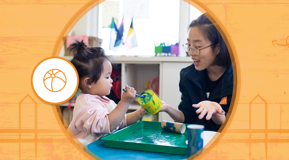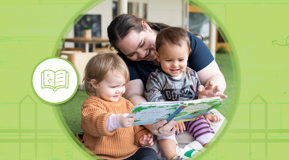Learning through play at SDN

At SDN, we know play. You’ll see children playing every day in our centres, preschools, playgroups and early intervention settings. We play because it’s fun, it’s natural and it’s a child’s right.
But play is much more than fun, it is one important way that children learn.
What is play?
Play is often described as a child’s work. It’s a process of seeking meaning and demonstrating ideas and understandings. It’s often joyful, is intrinsically motivated and freely engaged with. You can’t force play, it requires choice.
What are some types of play?
Play can be structured or unstructured. Unstructured play is often spontaneous and responsive. Structured play is organised and might involve rules or guidance from adults.
Let’s take a look at four types of play.
- Functional play is practice play. This kind of play helps children work out what an object is and how they can control it. Infants might actively test the properties of an object like banging or throwing it. Once a child learns how to use an object as its’ intended, functional play means playing in that intended way (eg rolling a ball).
- Constructive play involves creativity or constructing something. It might involve block building, but it might also involve collage or sand. Constructive play requires planning and problem-solving.
- Games with rules can include games like snakes and ladders or soccer where the rules are universally understood, or made-up games where children create rules and follow them during play.
- Dramatic or Pretend Play involves using imagination to imitate what children know or imagine. This social play can be solitary or involve others, and children tend to develop in stages. When children bring functional, constructive play and rules into pretend worlds with others, they are demonstrating the highest form of play.
Why is play important?
Play builds brains. From birth, parents “serve and return” interactions with their children gradually increase in complexity over time to hard-wire a young child’s brain. As Dr Stuart Brown tells us in his (renowned among educators) TED Talk on play, “Nothing lights up a brain like play.”
When children play, they learn skills for life. They test theories, problem-solve, use memory and develop control over their bodies. Play allows children to participate in educational settings and in the community. Social play has a profound impact on how children come to understand themselves as individual beings and how to interact with one another.
Of course, one of the most powerful outcomes of play is curiosity – an appetite for learning and participating in the world around us.
What’s the role of an adult in children’s play?









